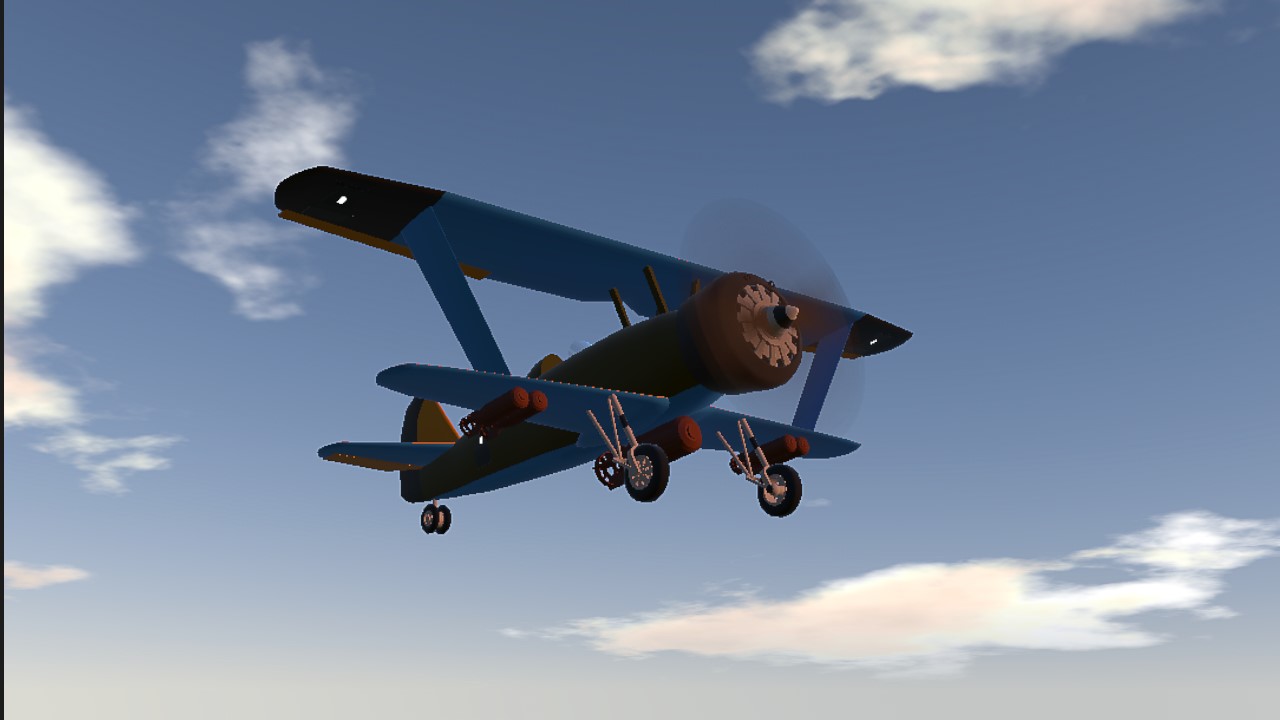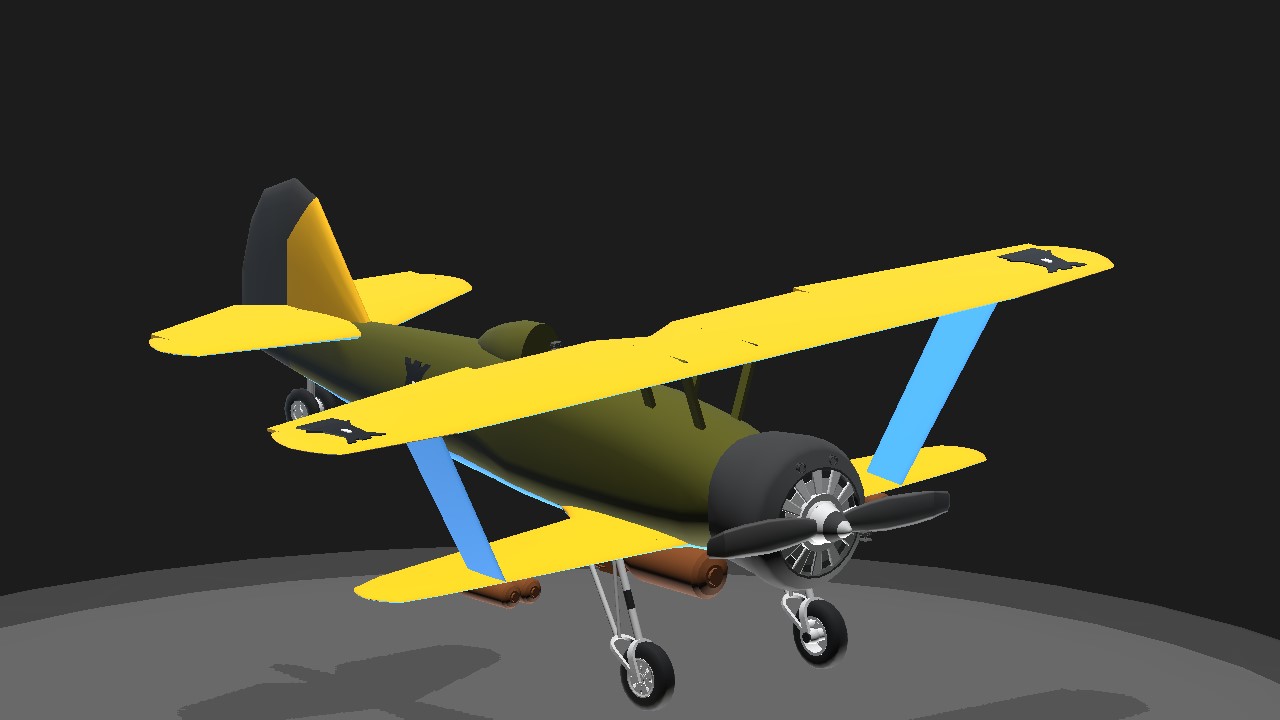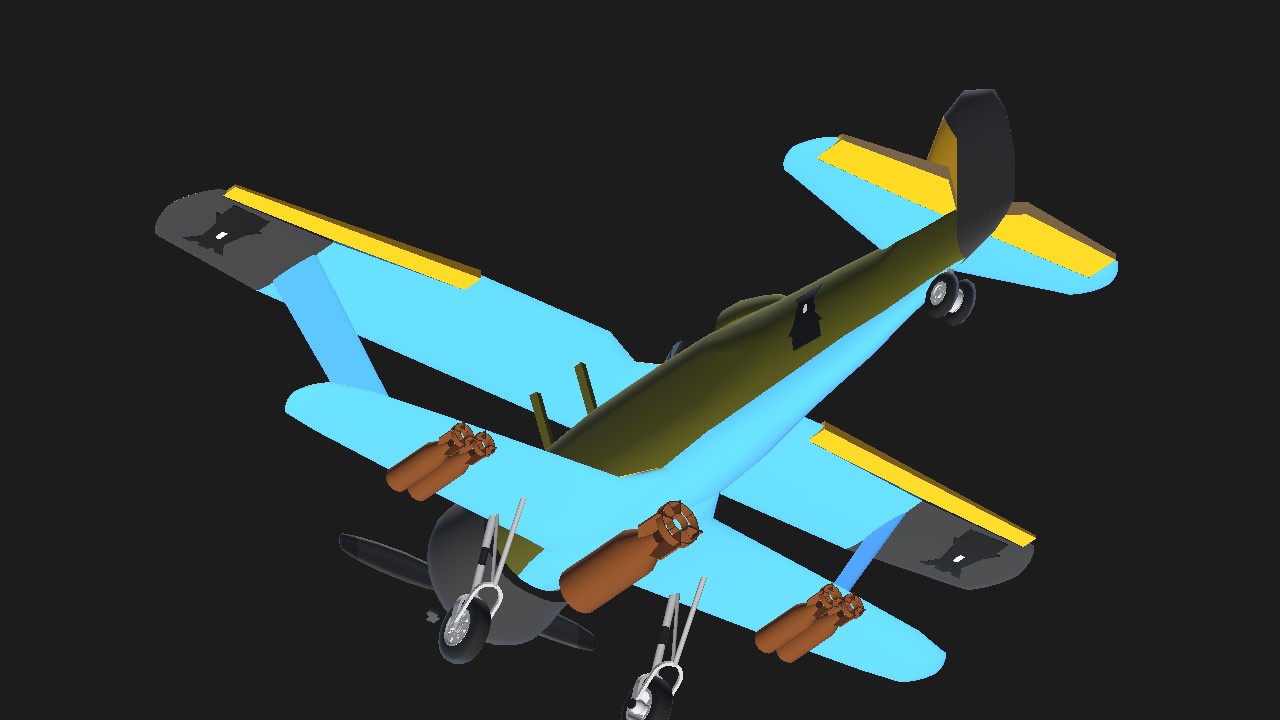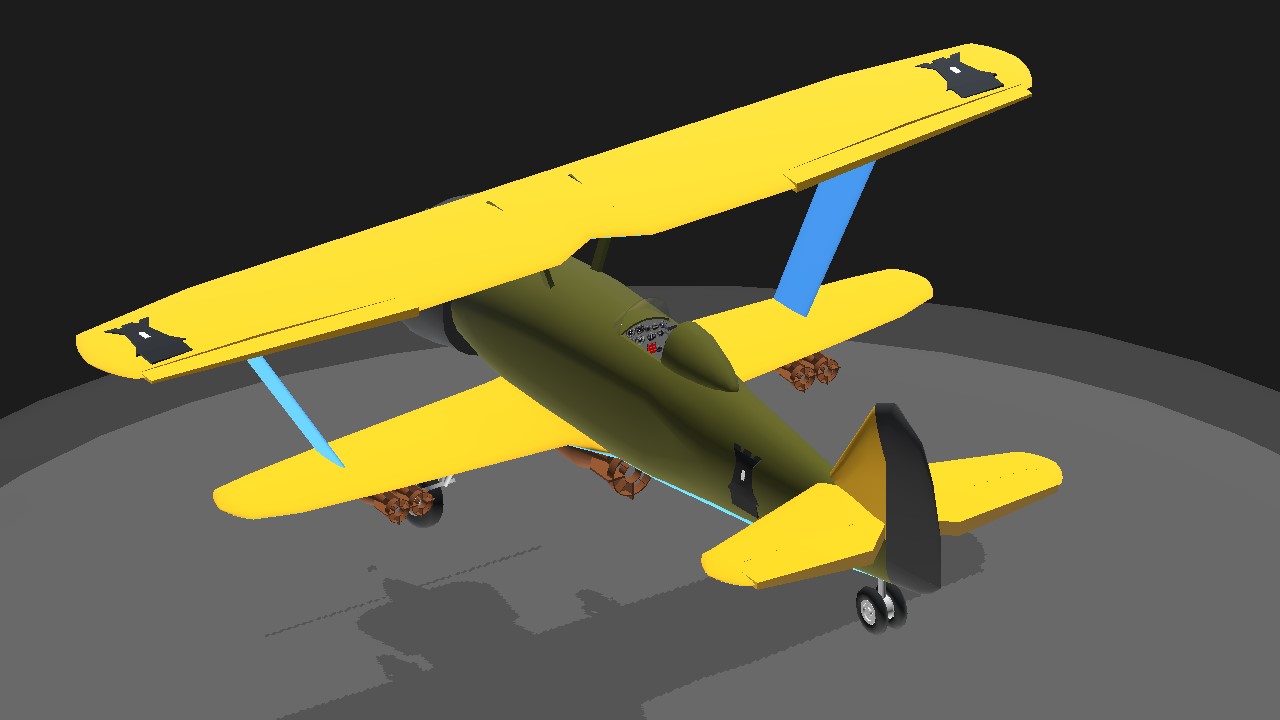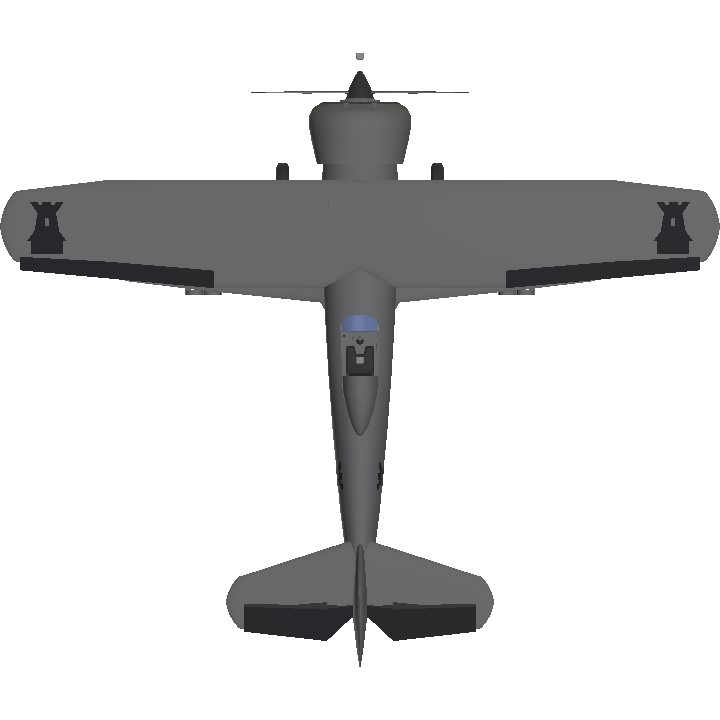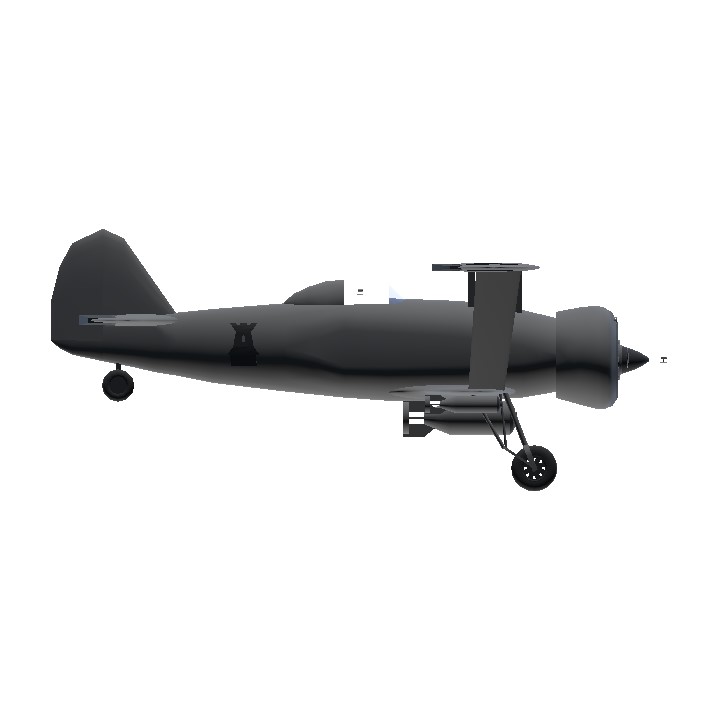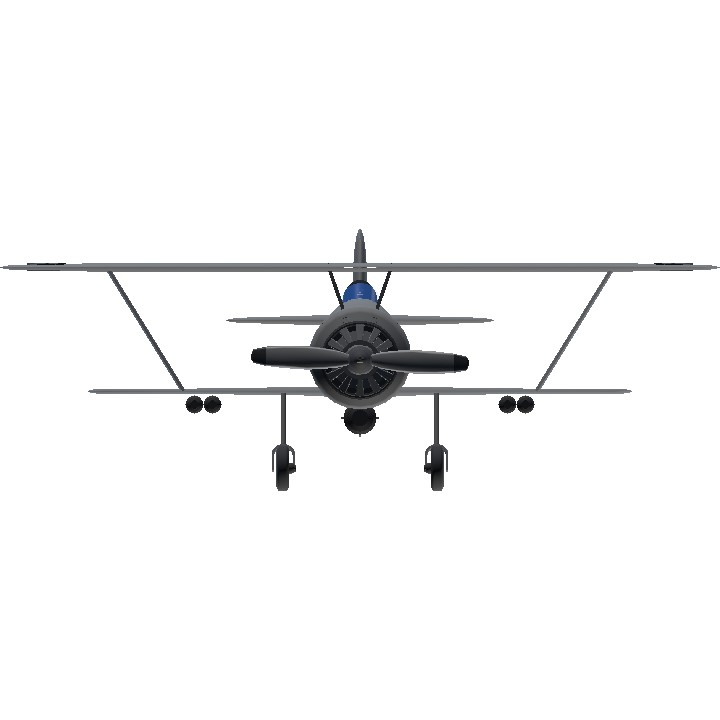
The Goshawk is a license built version of the Henschel Hs-123.
Henschel was a German locomotive manufacturer. Soon after Hitler's rise to power, Henschel decided to start designing aircraft, one of the first being the Hs 123. The aircraft was designed to meet the 1933 dive bomber requirements for the reborn Luftwaffe. Both Henschel and rival Fieseler (with the Fi 98) competed for the production contract requirement, which specified a single-seat biplane dive bomber. The first prototype, the Hs 123V1, was cleared for its maiden flight on 1 April 1935; General Ernst Udet, a World War I ace, flew it on its first public demonstration flight on 8 May 1935. The first three Henschel prototypes, with the first and third powered by 485 kW (650 hp) BMW 132A-3 engines and the second by a 574 kW (770 hp) Wright Cyclone, were tested at Rechlin in August 1936. Only the first prototype had "smooth" cowlings; from that point on, all aircraft had a tightly fitting cowling that included 18 fairings covering the engine valves. The Henschel prototypes did away with bracing wires and although they looked slightly outdated with their single faired interplane struts and cantilever main landing gear legs attached to smaller (stub) lower wings, the Hs 123 featured an all-metal construction, clean lines and superior maneuverability. Its biplane wings were of a "sesquiplane" configuration, whereby the lower wings were significantly smaller than the top wings.
The overall performance of the Hs 123 V1 prototype prematurely eliminated any chance for the more conventional Fi 98, which was cancelled after a sole prototype had been constructed. During testing, the Hs 123 proved capable of pulling out of "near-vertical" dives; however, two prototypes subsequently crashed due to structural failures in the wings that occurred when the aircraft were tested in high-speed dives. The fourth prototype incorporated improvements to cure these problems; principally, stronger centre-section struts were fitted. After it had been successfully tested, the Hs 123 was ordered into production with a 656 kW (880 hp) BMW 132Dc engine.
The Hs 123 was intended to replace the Heinkel He 50 biplane reconnaissance and dive bomber as well as acting as a "stop-gap" measure until the Junkers Ju 87 became available. As such, production was limited and no upgrades were considered, although an improved version, the Hs 123B, was developed by Henschel in 1938. A proposal to fit the aircraft with a more powerful 716 kW (960 hp) "K"-variant of its BMW 132 engine did not proceed beyond the prototype stage, the Hs 123 V5. The V6 prototype fitted with a similar powerplant and featuring a sliding cockpit hood was intended to serve as the Hs 123C prototype.
Controls

Uses standard controls
VTOL controls propeller ptich
• VTOL up for forwards, VTOL down for reverse/aerial breaking
Strongly advise to start in air, since it is a bit problematic when taking off. Similarly, be careful when landing.
Easy on the pitch, it spins out when you pitch too hard.
Don't climb too steeply, doe to relatively slow speed it can stall easier.
Specifications
Spotlights
- ToeTips 1.4 years ago
General Characteristics
- Predecessor War Challenge: The Island wars [CLOSED]
- Created On Android
- Wingspan 32.8ft (10.0m)
- Length 28.2ft (8.6m)
- Height 12.0ft (3.6m)
- Empty Weight 4,358lbs (1,976kg)
- Loaded Weight 5,368lbs (2,435kg)
Performance
- Horse Power/Weight Ratio 0.164
- Wing Loading 24.0lbs/ft2 (117.3kg/m2)
- Wing Area 223.4ft2 (20.8m2)
- Drag Points 3270
Parts
- Number of Parts 221
- Control Surfaces 6
- Performance Cost 830

